Muhammad (full birth name: Abū l-Qāsim Muhammad b. ʿAbdallāh b. ʿAbd al-Muttalib b. Hāshim b. ʿAbd Manāf al-Qurashī ) was born around the year 570 in Mecca, Saudi Arabia. His parents Abdallāh ibn ʿAbd al-Muttalib and Āmina bint Wahb belonged to the Hashemites, who in turn belonged to the currently ruling Quraysh tribe. Muhammad's father Abdallah most likely died before his birth and his mother Amina around the year 577. No siblings are known. Immediately after Muhammad's birth, he was taken to a wet nurse named Halīma bint Abī Dhuʾaib, who lived with her tribe like nomads in the desert. After two years he returned, and his mother died. He was six years old then. He was then brought to his grandfather ʿAbd al-Muttalib, who also died two years later. When he was about eight years old, Muhammad moved in with his father's younger brother. Even in those years he worked as a shepherd and later as a businessman. When he was 20 years old, wars were raging between the Qais ʿAilān tribe and the allied Quraish and Kinānas.
Muhammad (570 to 632)
BackMuhammad the Prophet and Founder of Islam
Muhammad is known as a prophet and founder of the religion of Islam who lived from about 570 to 632 after Christ. He was a social initiator, politician, arbiter and military leader. He was a powerful commander of his time, who knew how to win people over and successfully wage war against the infidels. In his 60 or so years of life, he gained over 2000 followers who form the descendants of today's 1.8 billion Muslims. He lived a strictly religious life from the time of his calling and tried to convert as many "infidels" to Islam. Among them were many Christians and Jews, who were eventually expelled or enslaved by him. Muhammad had several marriages and 7 children of his own known to researchers today.
The Koran was also written by Mohammed. Told by him and written down by a scribe, today we can find many references to how people lived during that time.
Marriages of Muhammad (595)
Muhammad's first wife was Khadijah (widowed), who was originally his superior and for whom he did various businesses. She was about 15 years older and offered marriage to Muhammad when he was 25 years old. Through this marriage, Muhammad gained financial security for the first time. Two sons al-Quasim and Abdullah, an adopted son Zaid from Chadijah's earlier marriage, and four daughters Fatima, Rugaiya, Umm Kulthum, and Zainab are known from their time together. The sons of Khadijah and Muhammad died in infancy, and of the daughters, only Fatima's offspring survived. The two had a faithful relationship for 25 years until Khadijah's death.
Then Muhammad married Sauda bint Zama, this marriage remained childless. As well as the one with Aisha, the youngest woman he was married to. At the time of the engagement, she was between 5 and 9 years old. Other known wives were Hafsa, Zainab bint Chuzaima, his cousin Zainab bint Gahs, and Umm Salama the widow of a close friend of Muhammad. As well as Safiya Bint Huyai, a former Jewish captive of the conquest of Haibar, who was first Muhammad's concubine and became a woman after the liberation. Further Dschuwairiya, Ramla and Maimuna. In addition, Muhammad owned around 4 concubines and slave girls. One of them named Maria al-Qibtiyya, a Christian woman who was given to him as a gift, gave birth to his son Ibrahim, who died in infancy.
Muhammad's Call and Revelation (610)
In research on the life of Muhammad and his spiritual experiences, the Sira (prophet's biography) is considered one of the most important sources. In addition, the Koran, in which what Muhammad said was subsequently written down.
Every year, Muhammad traveled alone or with his family to Mount Hirā' and spent a month there to do penance. Around the year 610, he was there again and, according to his own account, was visited by the archangel Gabriel (incidentally, the same angel who announced the birth of Jesus to Mary in the bible The following description comes from a direct narration from the Sira. The archangel came into Muhammad's tent as he slept with a described silk cloth and commanded him four times "to perform it." After Muhammad refused, the archangel Gabriel pressed the silk cloth on Muhammad's face until he panicked that he was going to die and asked out of fear "what he should perform". The answer of the archangel can be read in today's Koran in Sura 96, verses 1-5: "Recite in the name of your Lord, who created, created man from an embryo. Perform ..." Further in the Sira one reads as Muhammad recited it. The archangel then left the tent and Muhammad woke up and felt these words inscribed firmly in his heart. Researchers disagree, but most believe that Muhammad was 40 years old on the day of his calling.
The first Muslims (614)
The first Muslim woman, according to Islamic historiography, was Khadija, Muhammad's first wife. She was followed by ʿAlī ibn Abī Tālib and Abū Bakr. By 614, Muhammad's new theory of faith was well regarded and accepted. When he began to question the previous idols of his people and the worship of multiple gods, the mood tilted. Violent attacks were made on Muslims as well as Muhammad personally. As well as an attempt to deprive the believers of their existence by means of a trade boycott. During the years 616 and 622, many of the first Muslims fled Mecca. Muhammad also stopped his public appearances and hid in the house of Arqam ibn Abi Arqam, an influential merchant of the area. The house stood some distance away on a hill of Mecca and was still considered a secret meeting place of the Muslims many years later.
During this time, Muhammad also repeatedly made contact with other people from the surrounding towns, such as Yathrib ( today known as Medina).
Escape from Mecca (622)
When it became known that the Quraish were plotting to murder Muhammad, he decided to flee from Mecca. First, he and Abū Bakr, a friend, hid for three days in a cave called Thaur, near Mecca. His friend's daughter named Asmā', provided them with water and food during those days. The Qur'anic word in Sura 9:40 is said to describe those days, "God did indeed succor him [then] when the disbelievers drove him out [from Mecca] two by two. ([ At that time] when the two of them were in the cave, and when he [i.e., Muhammad] said to his companion, 'Do not be sad! God is with us.'" Subsequently, Muhammad fled to the oasis of Yathrib, where he lived with a certain cult ibn Hidn of the tribe of Aus. His meetings from then on were held in the house of Sa'd ibn Chaithama (also from the Aus). Together with all the refugees from Mecca and the believers from Yathrib, Muhammad built a mosque. The Qubā'Mosque known as today is very likely the oldest Muslim mosque.
War against the Meccans (624)
In the first time of Muhammad in Yathrib, the atmosphere between the believers and non-believers was probably very tense. In the Koran we find the word: "(...) 'Restrain your hands (from fighting)...' (...)" - 4:77, which should describe that the believers should not do anything to their opponents or at least not get physical. Later, however, one reads, "Those who fight (against the disbelievers) (so according to a variant reading; in the text: who are fought) have been given permission (to fight) because they have been unjustly wronged (before). - God has the power to help them. - 22:39. This was the word for Muhammad and the other Muslims for their entitlement to fisticuffs. However, only fugitives from Mecca were allowed to fight. This was because only they were wronged with the expulsion from Mecca. Allegedly, however, they remained when Meccan caravans were attacked. The others, who were not expelled from their homeland and thus not entitled to fight, were allowed to defend Muhammad militarily as soon as he was attacked. Among their infidel enemies was the Quraysh tribe (the leading tribe of Mecca), from which Muhammad himself came.
In one of the numerous planned raids on a caravan returning from Syria, the Muslims were surprised from behind by an armed Meccan force. Despite being outnumbered, the Muslims won the "Battle of Badr." Earlier, Muhammad was already known in Yathrib as a prophet, social initiator, political leader and arbiter. Now he also became a military commander.
The pride of the Meccans was hurt and, moreover, their trade with other tribes put him in danger. Several of their trading partners seemed unsure after this defeat whether they wanted to continue doing business with the Quraish, even though they were dependent on them. They needed to prove that they were capable of showing revenge for the injustice that had been done. Abū Sufyān ibn Harb who had taken over the leadership of Mecca after the "Battle of Badr" led by him, launched a quick attack on Yathrib. However, with little success, he retreated rather quickly. Within a very short time, he recruited 3000 soldiers in Mecca to invade Yathrib from the oasis in the spring of 625. At Mount Uhud the actual battle took place, the "Battle of Uhud". This battle seemed to be won by the Muslims, so that they started to collect their booty. The archers left the battlefield to look elsewhere for the booty. At that moment, the Meccans led by Chālid ibn al-Walīd attacked once again and eventually won the battle. However, they left Muhammad alive and left Yathrib soon after to go home. Chālid ibn al-Walīd, who was subsequently a successful general, later converted to Islam in 629 and became one of Muhammad's closest friends and most important warriors. In the "Battle of Uhud," Muhammad was seriously wounded and his uncle Hamza died. There was great uncertainty among Muslims as to whether their God was really as great as he claimed. In the Quran, Sura 3 contains a long passage of text that was meant to justify this defeat.
As the Muslims continued to disrupt trade between Mecca and other tribes, they decided to attack once again and defend their business. But what they did not know was that in the meantime, the Muslims had dug a large trench around the settlements in Yathrib, which were not secure. So one day the Meccans wanted to attack, but did not get far because of the ditch. After a long siege, they left without having achieved anything. Although nothing significant happened at that time, the event is known today as the "Battle of the Trench".
Journey and conquest of Mecca (628)
6 years after the escape from Mecca and the battles in Yathrib, Muhammad decided to make a pilgrimage ('Umra) to Mecca with his followers. On the way, he was intercepted in al-Hudaibiya by the Meccans who wanted to negotiate with him. They worked out a treaty that allowed Muhammad and his followers to enter Mecca. This treaty contains 5 main points. The first is truce for either ten or two years, scholars disagree. The second was the extradition of all Muslims who fled to Yathrib without permission. After that comes that Muhammad again promised the Quraish security on their trade routes to the north. In return, he demanded that the Muslims who were on pilgrimage be granted security during that and the following years. Finally, the Meccans insisted on abandoning the pilgrimage in the year the treaty was signed, with the promise that it would take place the following year. On the one hand, this treaty brought about peace between Mecca and the Muslims; on the other hand, it also caused some discontent among the followers of Muhammad. The reason for this was that Muhammad agreed to betray his own people in an escape and to forgo the 'Umrah that year. However, this soon changed when the Muslims managed to conquer a little further away from Mecca, the oasis of Chaibar from the Jewish tribe of Banu al-Nadir who lived there. Muhammad allowed the Jews to continue cultivating the oasis, but ordered half of the harvest to be given to the total of 1600 Muslims who were there. Muhammad himself received a total of 1/5 of the entire harvest. However, this did not work out as the Jews had envisioned, and so shortly thereafter they were driven out of the region altogether. In the Koran, where this conquest can be read, Muhammad is described at the end as follows: "Muhammad is the messenger of God. And those who (believe) with him are fierce toward the unbelievers, but compassionate among themselves." - 48:29.
A year after the conquest of Chaibar, in the spring of 629, Muhammad and his 2,000 followers set out for Mecca to begin the promised 'Umrah (pilgrimage). To avoid confrontations, most of the Meccans around the shrine left the city for three days. Meanwhile, several high-ranking and influential extended families had joined Islam, so it was only a matter of time before Muhammad could take Mecca. In January 630, a Muslim army set out for Mecca. This broke the truce, and thus the whole treaty, on the part of Muhammad. Once in Mecca, Muhammad promised a general amnesty to all those who did not resist, which means that they would not be punished or imprisoned. During the conquest only 28 Meccans died, others fled. Otherwise, there was almost no bloodshed due to the promised amnesty. Afterwards, Muhammad cleaned the Kaaba (sanctuary) and had all idols removed from the area and destroyed. In addition, he had the shrines of the gods al-Manāt and al-ʿUzzā destroyed that had been set up nearby and called on all the surrounding tribes to join Islam. After two or three weeks, Muhammad traveled back to Medina (Yathrib).
Different religions in Medina (630)
At the time Muhammad returned to Medina, there were many different tribes living in Medina. One was the Aus and Khazarj with several sub-tribes. As well as several Jewish clans such as the Banu n-Nadir, Banū Quraiza, Qaynuqa' and those who were still living near the oasis of Chaibar conquered by Muhammad. But also families who had already become Muslims before Muhammad's emigration. Those Muslims who came from Medina were called al-Ansar (helpers/supporters). Those who came from Mecca, the Muhājirūn (emigrants).After Muhammad had tried to eliminate or convert all non-believers (polytheists) in Mecca, he wanted to have a coexistence of all faiths in Medina. So he had a community order written in which all religions had the same rights and duties. He had many of the Jews sanctioned, as well as incorporating some pre-Islamic rituals into his pilgrimage ceremonies. He wanted to have a community, also called "Ummah". He let everyone live their religion, made themselves available as advisors, and wanted people to offer protection to each other. Even though Muhammad was so open to the Jews and Christians in the early days, he believed that the only "believers" were the Muslims and that the others would join him. In fact, if you look closely, he had already been expelling influential Jews since he arrived in Medina. Among them were the influential tribes of Banū Qainuqāʿ and Banū n-Nadīr, who moved to the oasis of Chaibar and, as already described, were also expelled from there by Muhammad. During the Battle of the Trench, he had all the men of the Jewish tribe of Banū Quraiza, executed for a treaty violation. The men and women of this tribe had been farming in the city of Medina for many years before. A treaty that was supposed to resolve their dealings with each other peacefully was broken because the Banū Quraiza helped build the trench during the Battle of the Trench but also supplied the enemy with provisions and made secret arrangements. The leader of the tribe himself finally gave the order to kill the men and take the women and children captive. Muslims and scholars still disagree today about who is to blame for this elimination of a Jewish tribe and whether Muhammad's decision was appropriate for the time.
Despite all this, there were still other Jews living in Medina after the conquest of Mecca. Which is why there were always discussions between the scribes (Jews and Christians who knew the Bible well) and Muhammad. In the Koran one reads that the Bible experts rejected his ideas and statements. There is a section called "Provocation Verses" which contains a detailed discussion with the biblical objections as well as Muhammad's responses. He also accused the Jews and Christians of falsifying and adapting their scriptures and claimed that Islam was the only true religion. The dispute led back to Abraham, who is considered the progenitor of both the people of Israel (Jews) and the Arabs. Due to the fact that Muhammad believed that only the Muslims were "believers" and the Jews and Christians were not, it was also clear that Abraham had to believe in his God. Whether Abraham is considered to be the first Muslim or not, not everyone in Islam equates the two. However, according to the Quran, the scribes said, "You must be Jews or Christians, then you will be rightly guided." To this, Muhammad replied, "Say no, for us there is only the religion of Abraham, a hanif (meaning one who seeks God) - he was not a pagan! (2:135) Abraham was neither a Jew nor a Christian. He was a hanif devoted to God and not a pagan." (3:67).
At the end of the year 630, according to the Quran, Muhammad called for fighting against the Christians until they became tributary. This resulted in important Jewish and Christian tribes submitting to him and converting to Islam. Muhammad also had over 20 small mosques built in the next few months, declaring the country Islamic.
Muhammads death (632)
In the beginning of the year 632, Muhammad started the annual pilgrimage with his followers. At Mount Arafat, he gave a speech that is considered a legacy to all his followers. It is in Sura 5, verse 3: "Today I have completed your religion (so that nothing is missing from it) and completed my mercy on you, and I am satisfied that you have Islam as your religion." Ancient scriptures tell us that on the return journey of the pilgrimage, he passed by the grave of his mother in al-Abwā', who died "disbelieving." He asked forgiveness for her. On June 8, 632, Muhammad died unexpectedly as a result of a sudden illness. The news of his death was said to have been so disconcerting for Medina that the body probably remained in the house of his wife ʿA'isha for a whole day and was only later buried underneath it. It was further said in the city that he would rise again after 40 days, as Moses had once done when he was declared dead. However, Moses was not dead during this time, but was on a mountain alone before God's face. Today, Muhammad's tomb, together with those of Abū Bakr and ʿUmar ibn al-Ḫaṭṭāb, is located in the "Prophet's Mosque" in Medina.
Embedded Videos
The life of Muhammad
How Islam Began - In Ten Minutes
History of Muhammad
The sacred city
How Muhammad became prophet of Islam
Islamic Prophets Family Tree
Comments & Conclusions
Muhammad a strong spiritual fighter
Muhammad's talent for winning over people can be seen in the number of his followers at that time. He knew how to live up to his time as a warrior and leader and worked hard to do so. It is admirable to see how he made a decision for life from an encounter and then consistently followed Allah. However, I wondered whether his decision at that time was made out of free will or fear. Muhammad was threatened by an archangel that he should tell about Allah. He then also lived this pattern of acting harshly against "unbelievers". And one sees it also today again with the attacks of Islamists on the differently believers.
Muhammad has brought a radical change at that time and I ask myself whether this is the way of God to win so people for himself or whether he could show his power also without human force.
Simultaneous events, periods or persons of Muhammad
| Persons/Events/Periods | Subcategory | From | To | Reason of importance |
|---|



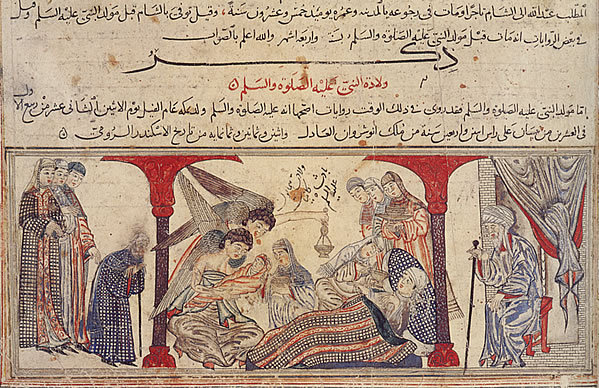
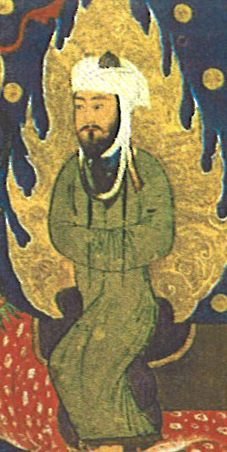
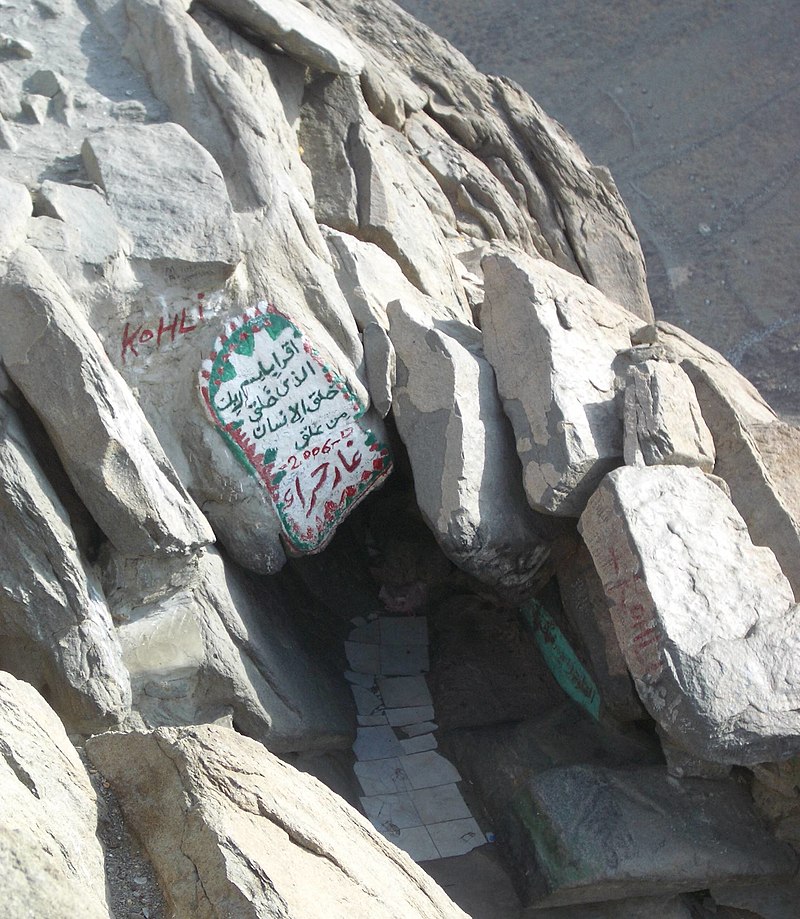

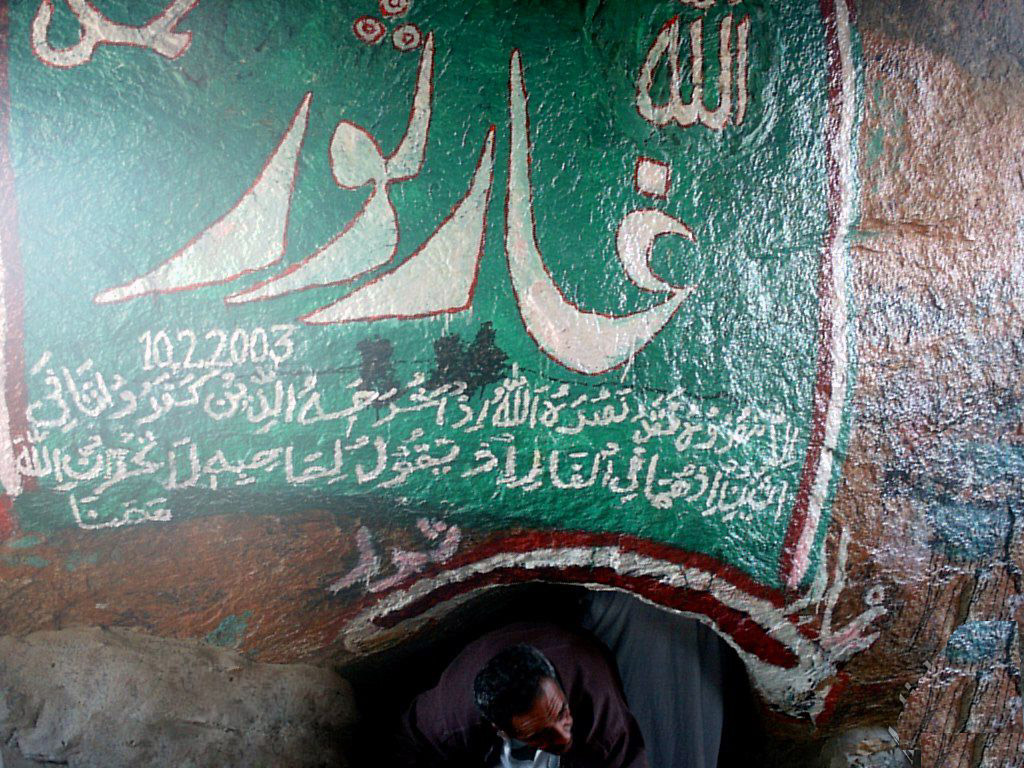
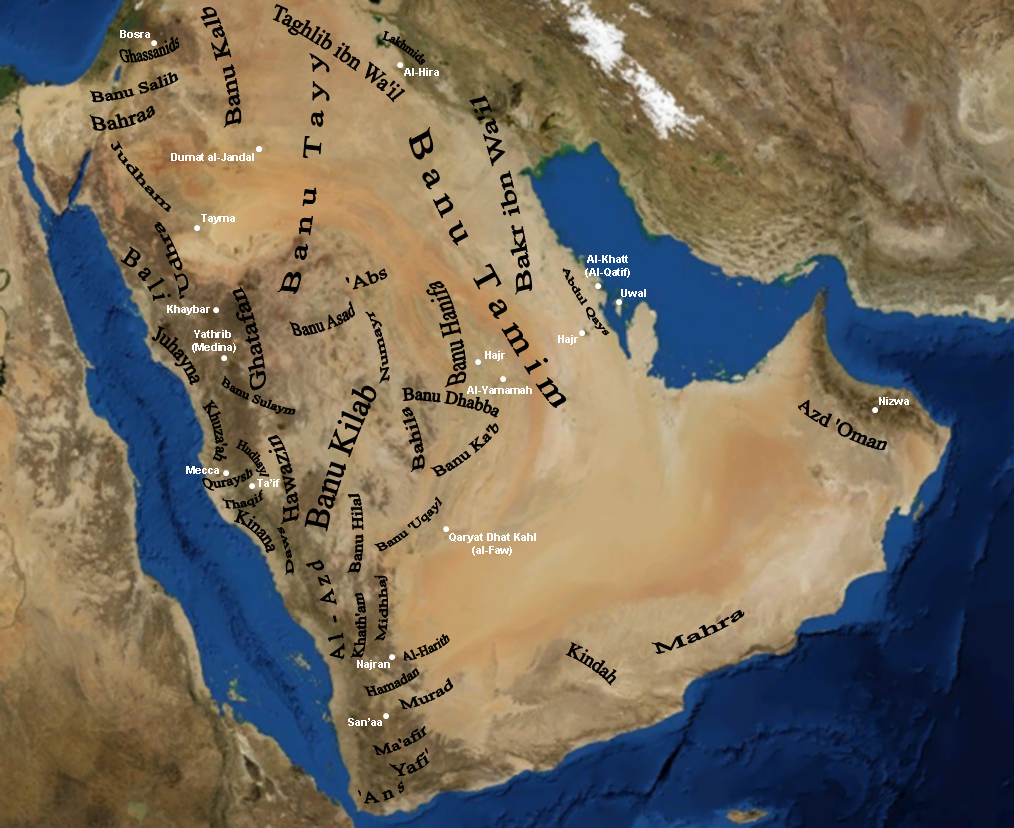
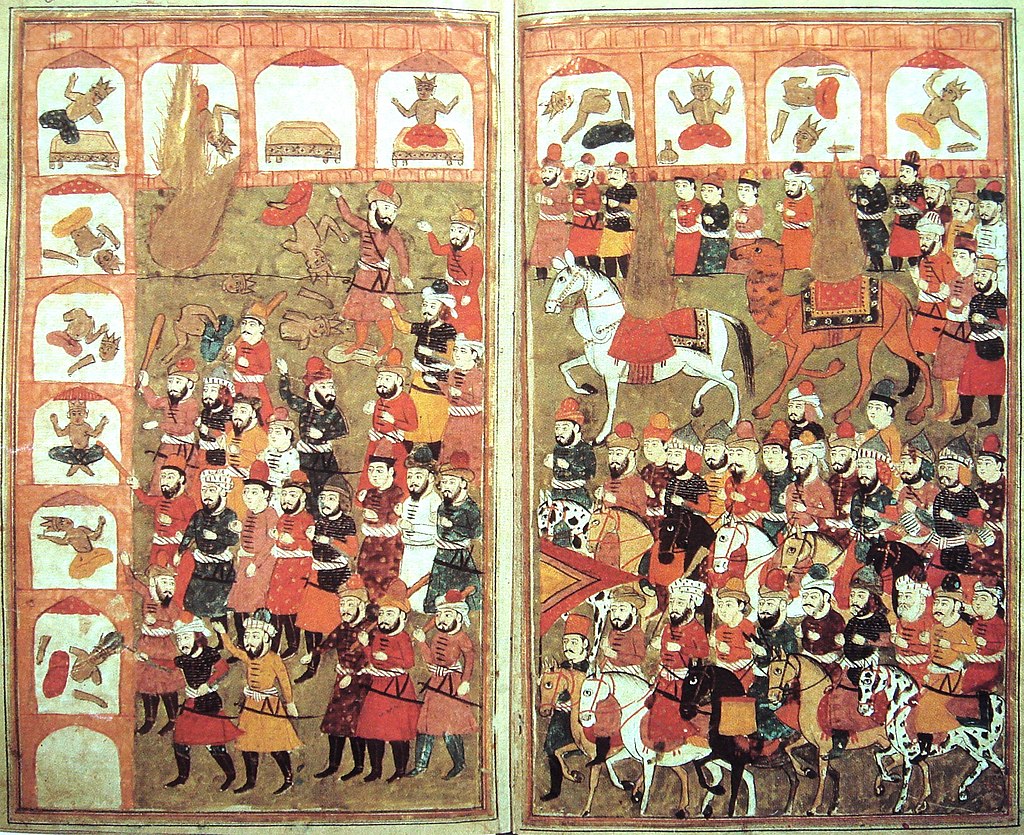

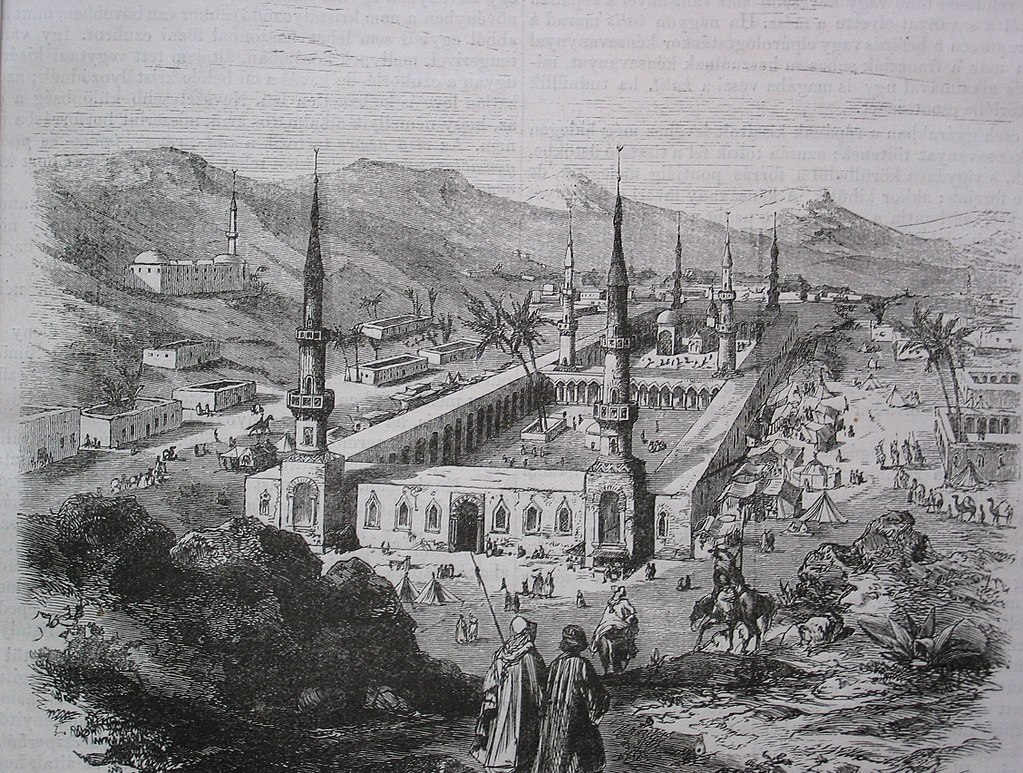

Comments
Links